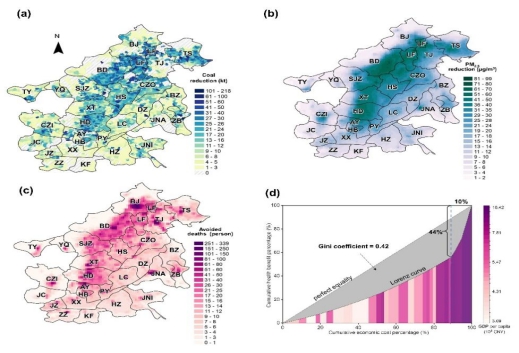On April 18th, Professor Jiashuo Li, in collaboration with the Ministry of Ecology and Environment and Nanjing University of Information Science & Technology, published a study entitled "The Uneven Distribution of Health Benefits and Economic Costs from Clean Heating in Rural Northern China" in Science Bulletin. Professor Jiashuo Li is a co-corresponding author, and doctoral student Pengfei Zhang is a co-first author. Other authors include Wei Zhang and Wenbo Xue from the Ministry of Ecology and Environment, as well as Associate Professor Feng Wang from Nanjing University of Information Science & Technology.
This study is based on a high spatial resolution clean heating dataset covering 2+26 cities and over 25,000 villages in the Beijing-Tianjin-Hebei region. It quantitatively analyzes the economic costs and environmental health benefits through a comprehensive evaluation model integerating the Weather Research and Forecasting-Comprehensive Air Quality Model (WRF-CAMx) and the Global Exposure Mortality Model (GEMM), and examines the interregional impacts of clean heating initiatives across municipalities. The results show that: (1) Clean heating initiatives reduced coal consumption by 40.34 million tons in 2+26 cities, leading to a 23% decrease in the annual concentration of regional PM2.5. (2) Clean heating initiatives prevented 74,877 (61,831-87,685) premature deaths related to PM2.5 in 2+26 cities, with intercity health spillover effects accounting for 45% of the total avoided deaths. (3) The monetized health benefits of clean heating (705.6 billion yuan) exceeded its economic costs (506.0 billion yuan). However, there is an unequal distribution of cost-benefit among cities, with a Gini coefficient of 0.42. The seven cities with the lowest income levels bear about 40% of the economic costs but only receive 20% of the total benefits. The study recommends a dynamic adjustment of existing central and local government subsidies based on local financial conditions and residents' income levels to ensure that low-income areas and residents can afford clean heating. Additionally, it suggests establishing interregional compensation mechanisms between cities based on health spillover effects within the 2+26 cities to compensate regions contributing to spillover benefits.

Figure 1. Costs and benefits of rural clean heating initiatives, including (a) reduced bulk coal consumption, (b) reductions in population-weighted annual average PM2.5 concentrations, (c) avoided PM2.5-related premature deaths, and (d) cost-benefit Lorenz curve and related Gini coefficient.
This research was funded by the National Natural Science Foundation of China (72074155, 72074137, 72374107), the Shandong Province Natural Science Foundation (ZR2021YQ27), the Natural Science Foundation of Jiangsu Province (BK20230062), the National Key R&D Program of China (2022YFF0802504), and the Postgraduate Research & Practice Innovation Program of Jiangsu Province (KYCX22_1223).
Original article link: https://doi.org/10.1016/j.scib.2024.04.035
Author: Pengfei Zhang
